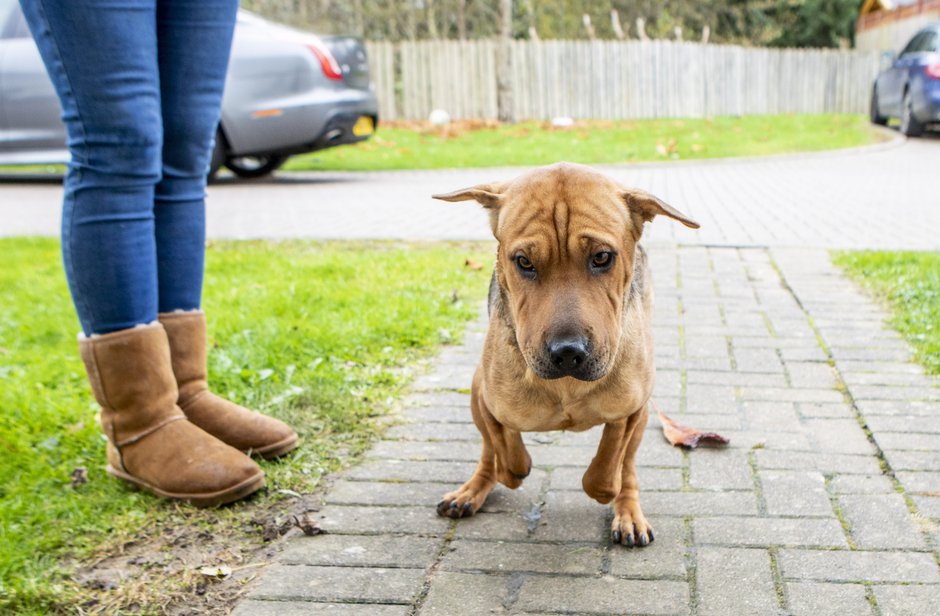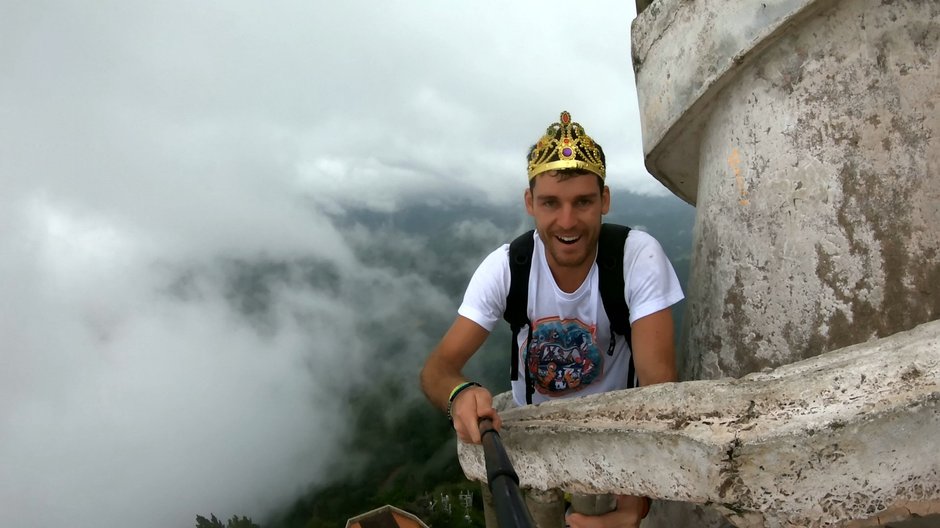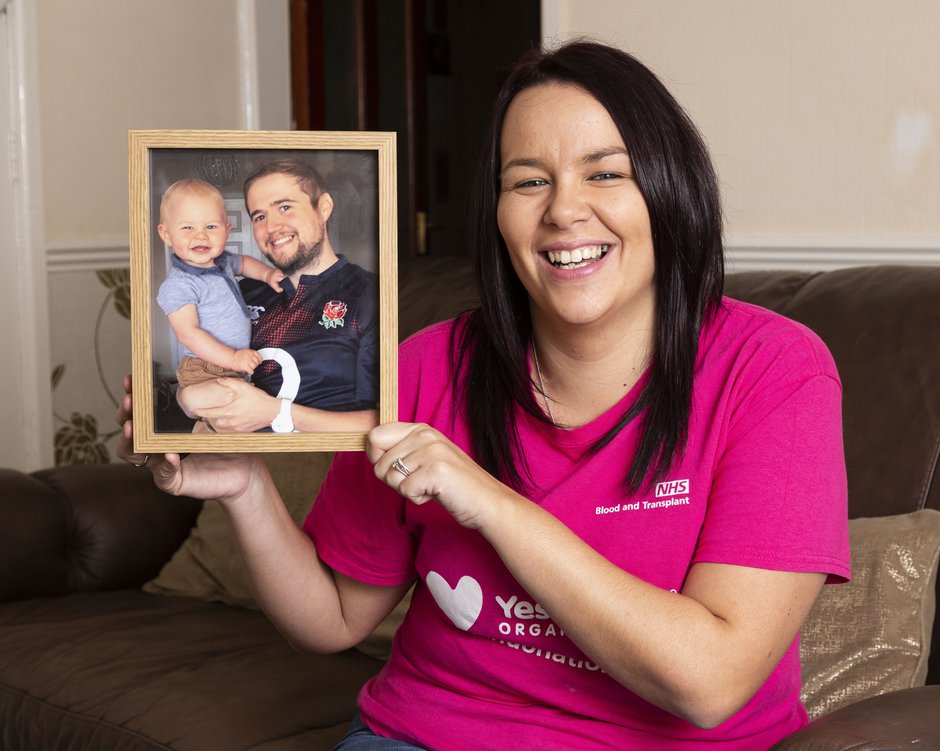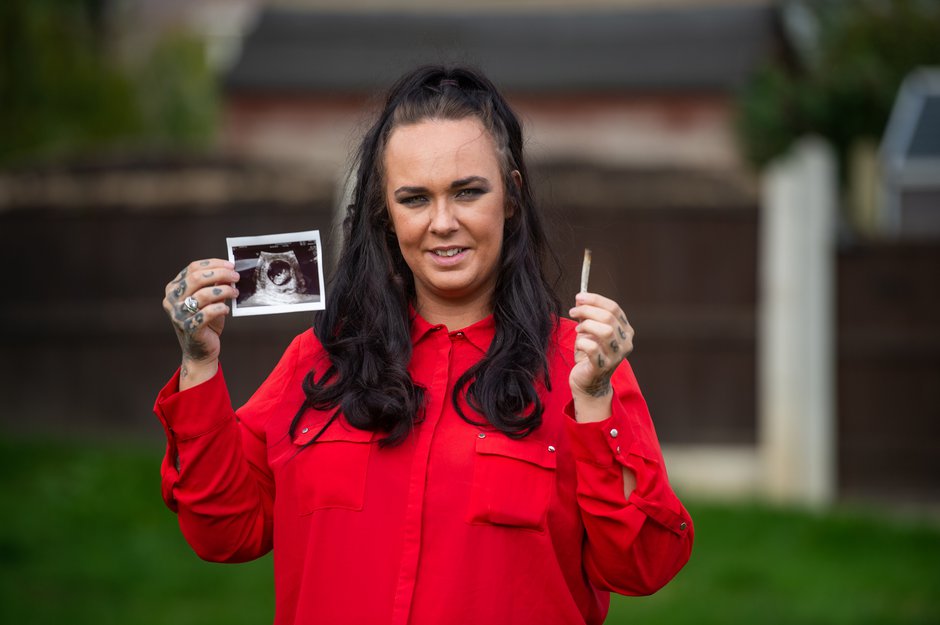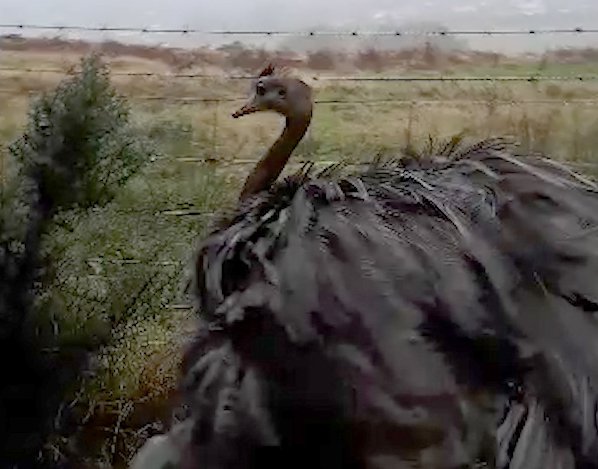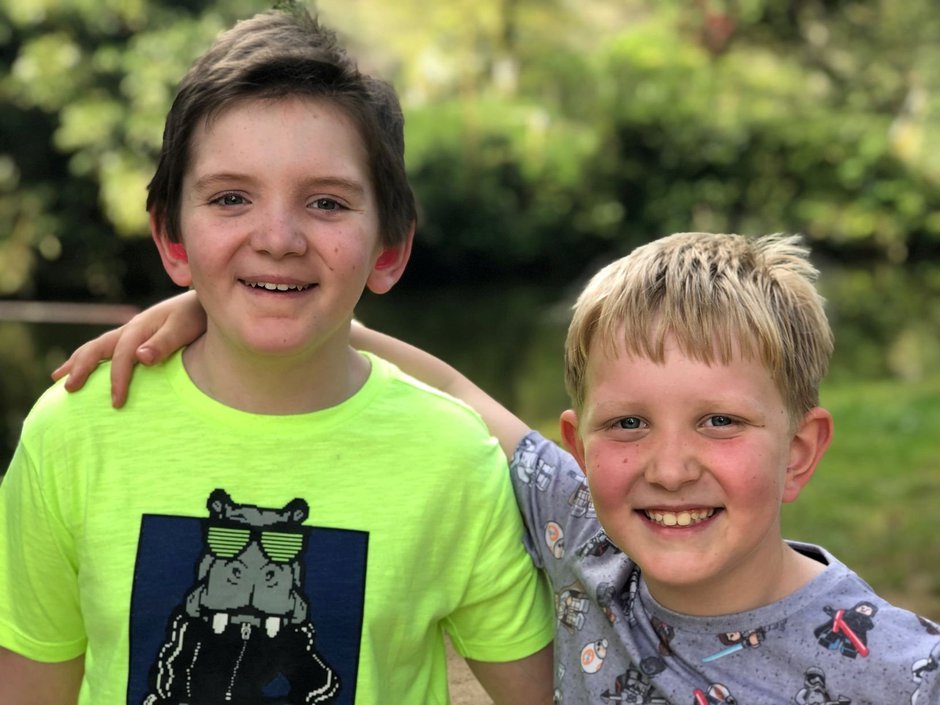FOAM GOAL - Children in a seaside town have been given FOAM footballs to play with - after complaints normal ones cause too much damage
 Image by: Simon Galloway
Image by: Simon Galloway
Children in a seaside town have been given FOAM footballs to play with - after complaints normal ones cause too much damage.
The kids were hit with a 'no ball-games' policy on their street after residents said wayward shots were smashing into cars and homes.
It meant football-mad youngsters had nowhere to play as there was no designated area for the sport nearby.
But children in Hawke Close in Newquay, Cornwall, have now been given special foam footballs so they can keep on kicking.
The move was thought up by the housing association LiveWest who became worried that outdoor playing time would be reduced.
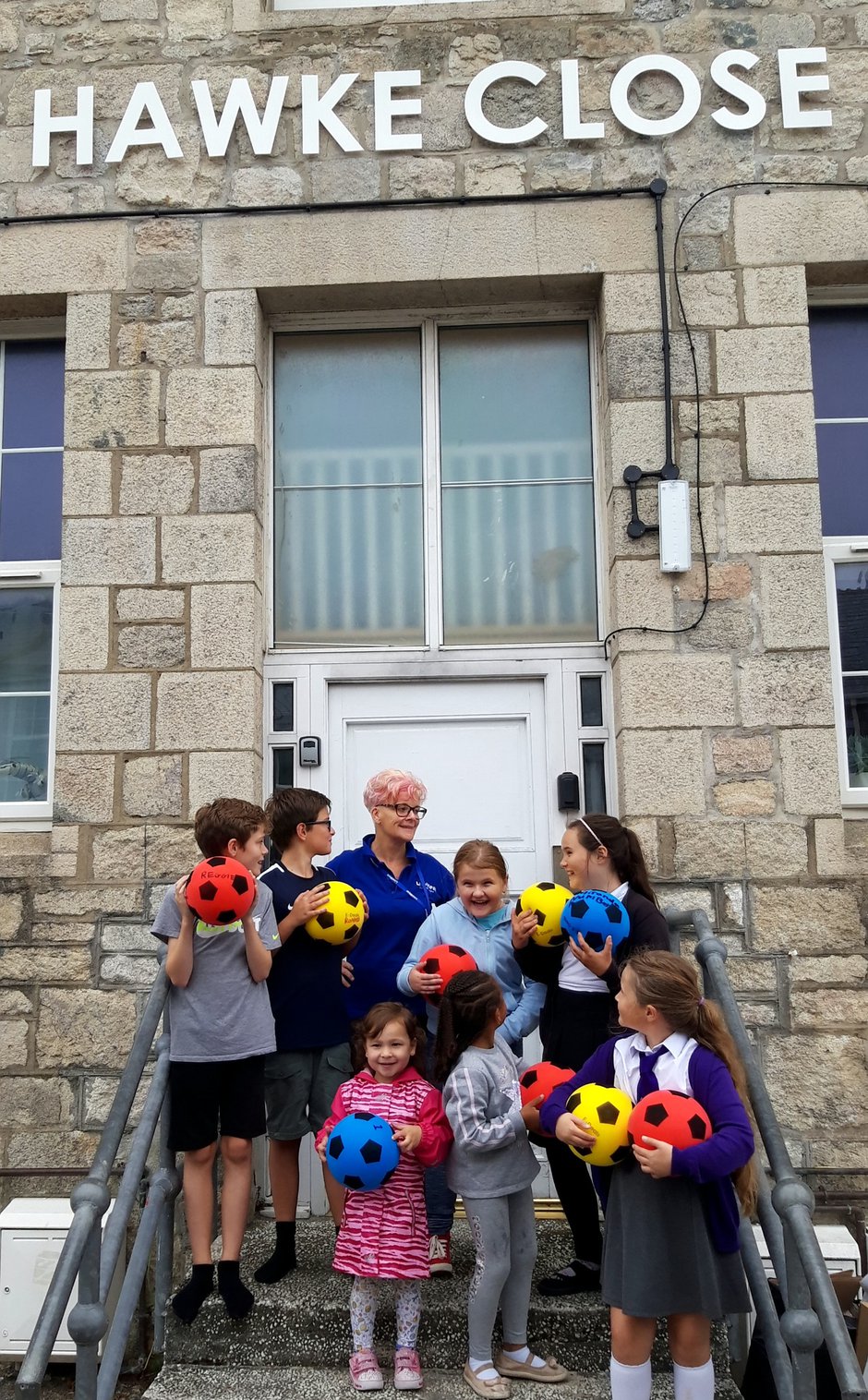 Image by: Simon Galloway
Image by: Simon Galloway Image by: Simon Galloway
Image by: Simon Galloway
Community connector Mai Evans said: "We wanted to see if we could find a practical solution to the safety issues of footballs at Hawke Close.
"So we held a community engagement event with the residents to listen to their ideas and views.
"We came up with the idea of buying some lightweight, low-density foam footballs which would allow the younger children to carry on playing football.
"The feedback has been really positive."
Housing officer Kirsti Challenger added: "Foam footballs were given to all of the children at Hawke Close along with reinforcing the message that playing football in the main car park area was not allowed and that other hard balls are not acceptable either.
"The foam footballs make it easy for them to have a kick around.
"The light weight of the balls means the children can have fun playing safely in a confined space without causing damage to any property."
Shar Pei puppy who had her front paws CHOPPED OFF by cruel thugs in Romania is enjoying a new life in Britain
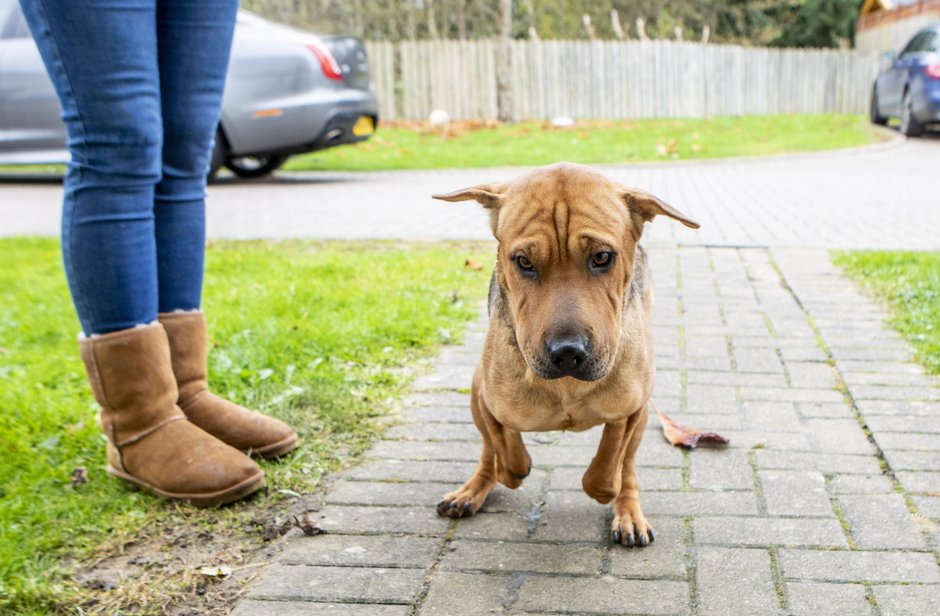 Image by: Katielee Arrowsmith SWNS
Image by: Katielee Arrowsmith SWNS
A Shar Pei puppy who had her front paws CHOPPED OFF by cruel thugs in Romania is enjoying a new life in Britain.
Tally, thought to be have been around eight months old when she was subjected to the horrific act of cruelty, was found chained to a tree stump in a town outside Bucharest.
She was unable to stand up due to her injuries, but began wagging her tail as soon as she saw the person who rescued her.
Tally, a Shar Pei mix, was fostered in Romania before being brought to the UK in a two-day journey to Scotland, and now lives with a foster family in Ayr, South Ayrshire.
Despite her limited mobility, determined Tally still tries to jump up on the sofa like any other dog - and manages to get around on her stumps.
However the imbalance in length between her front and back legs is putting pressure on her spine and her hips.
A set of prosthetics to help her get around will cost an estimated £10,000 - but hopes are high it could transform her life.
Plans are afoot to raise £600 for a specially made set of wheels which will help Tally until cash can be raised to pay for the prosthetics, which can only be fitted by Supervet Noel Fitzpatrick.
Tally was brought to the UK by charity Shar Pei Rescue Scotland, which operates on a shoestring budget but has rescued more than 600 dogs.
Foster mum, Karen Harvey, 48, said: “Tally is around 15 months old, that’s why we want to get prosthetics for her - because she’s young.
“I have got pictures of her chained to a tree with no front legs.
“She can get about in the front and back garden, by pushing herself about, and she can jump up on the couch but the imbalance is putting pressure on her spine and her hips.
“She will end up getting arthritis.
“We are fundraising to get her some wheels to take the weight off, but it will be about £10,000 for prosthetics.
“It will improve her quality of life.”
 Image by: Katielee Arrowsmith SWNS
Image by: Katielee Arrowsmith SWNS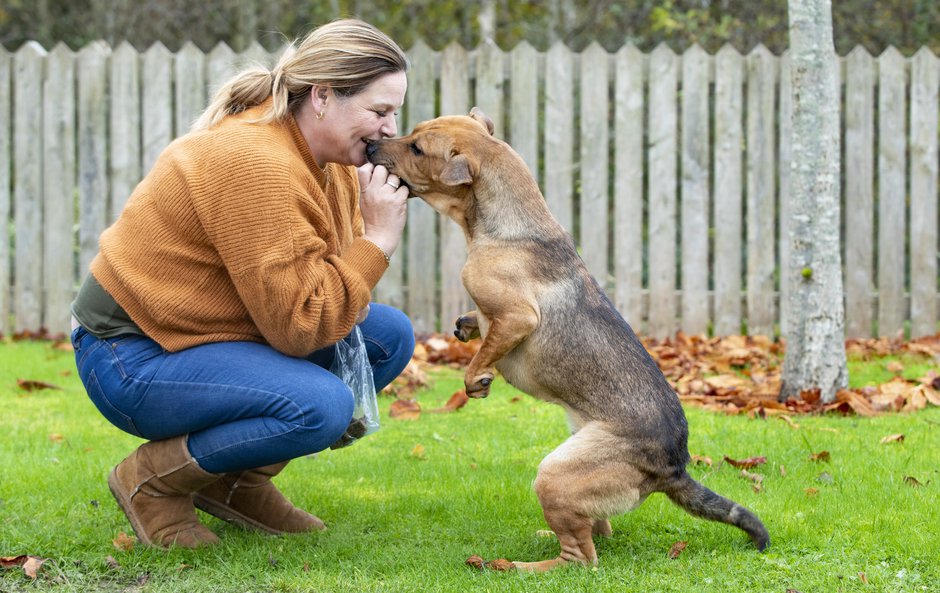 Image by: Katielee Arrowsmith SWNS
Image by: Katielee Arrowsmith SWNS Image by: Matthew Newby SWNS
Image by: Matthew Newby SWNS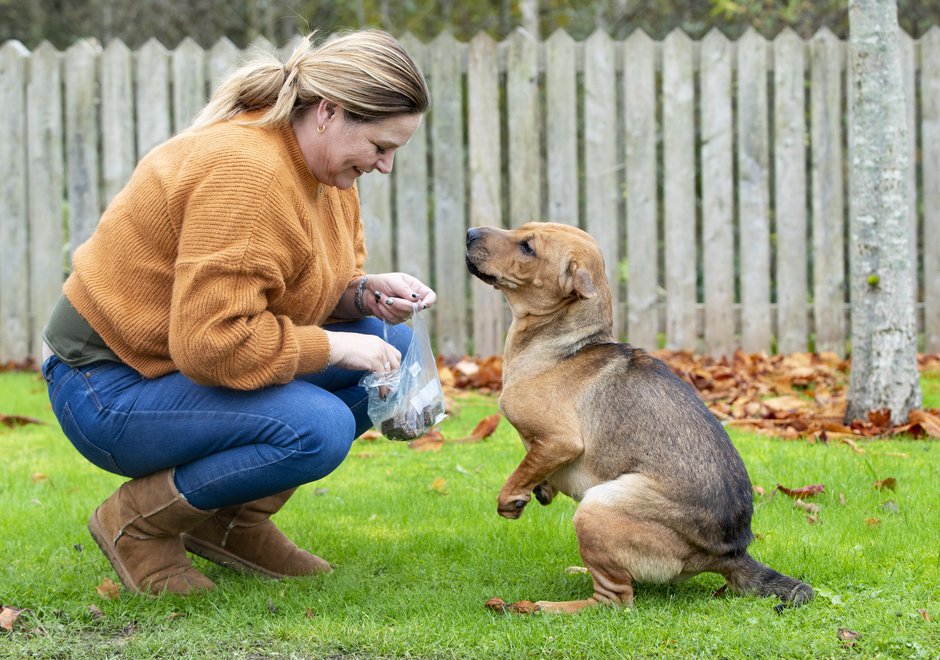 Image by: Katielee Arrowsmith SWNS
Image by: Katielee Arrowsmith SWNS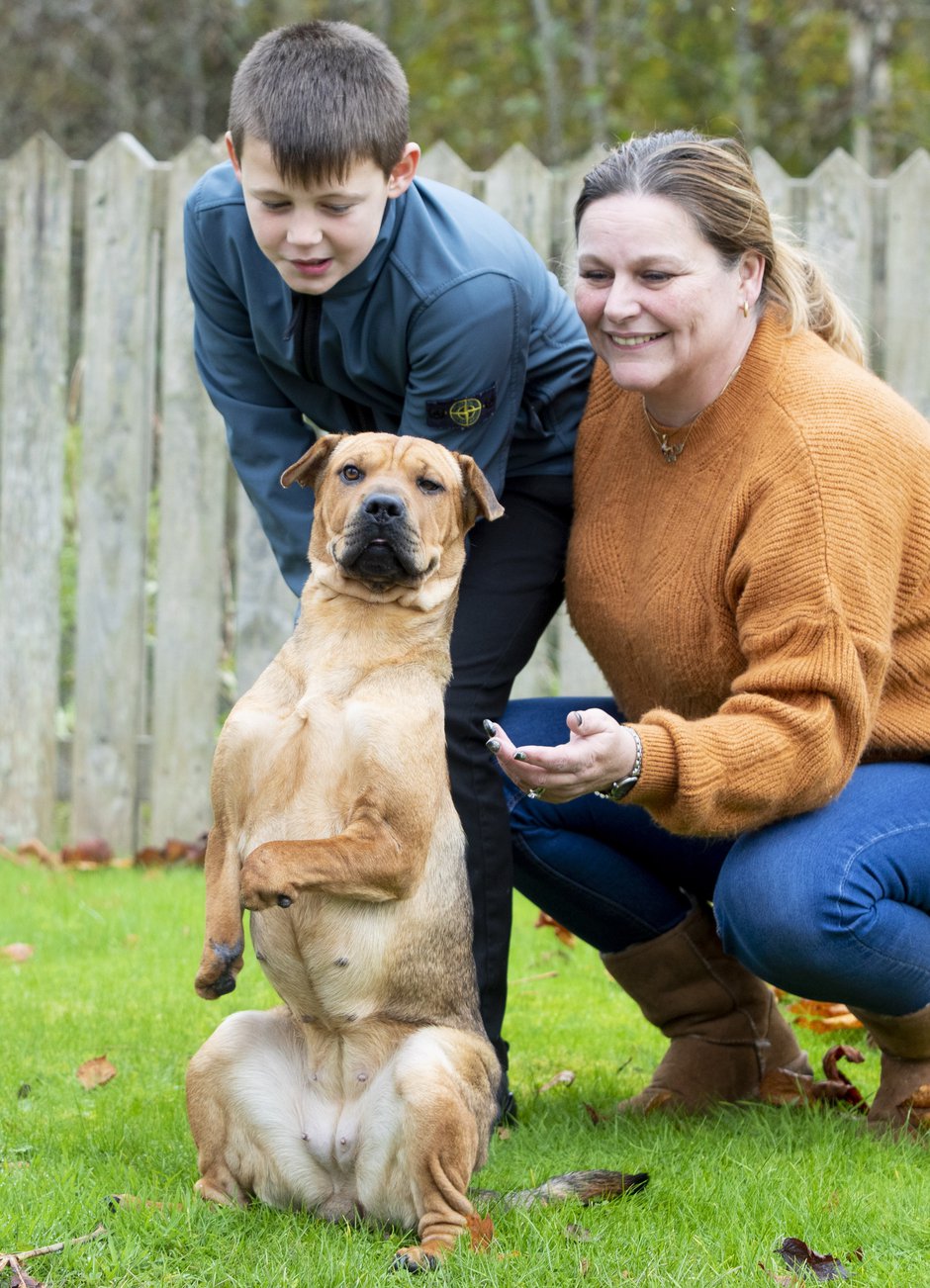 Image by: Katielee Arrowsmith SWNS
Image by: Katielee Arrowsmith SWNS
Her grandson, Tyler Roach, aged nine, dotes on the puppy.
Mum-of-two Karen, who has five grandchildren, said: “What happened to her is horrendous.
“Tally is such a loving girl.
“She just wants to cuddle and play.”
Karen had previously fostered another Shar Pei for her pal Gina McCallum, who runs the rescue charity.
Gina approached Karen to see if she could help provide a home for Tally.
Retiree Gina, from East Kilbride, South Lanarkshire, founded the charity in 2012 and partly funds it herself.
She said: “It took about six or seven months getting her here, and she has cost about £2,000 so far.
“We rescue a lot of dogs from Romania, Hungary, Bulgaria and Spain.
“All the pedigrees are quite common just now but Shar Peis are out of fashion.
“A lot of breeders are just dumping them in kill shelters, or abandoning them in the middle of nowhere.
“It is terrible - the vet who treated her had never seen anything like it before.
“Her bones had become infected.
“But she’s the happiest dog on the planet.
“When she was found, her tail just started wagging - someone had chopped her feet off but she still wanted to be around humans.”
The charity is hopeful that funding could be found through sponsorship from businesses.
It is run by volunteers but receives help from Taylor Vets in Cathkin, Glasgow.
Another seven or eight Shar Peirs are looking for homes in the UK.
Gina added: “We are always desperate for foster homes for the dogs.
“It’s amazing to see how well Tally has come on.
Donations can be made at [email protected]
Video by: Gabriella Petty
DON’T LOOK DOWN! This is the moment a travel vlogger got himself into a tight squeeze as he ascended the spiral stair case of the ancient Ambuluwawa Tower in Sri Lanka.
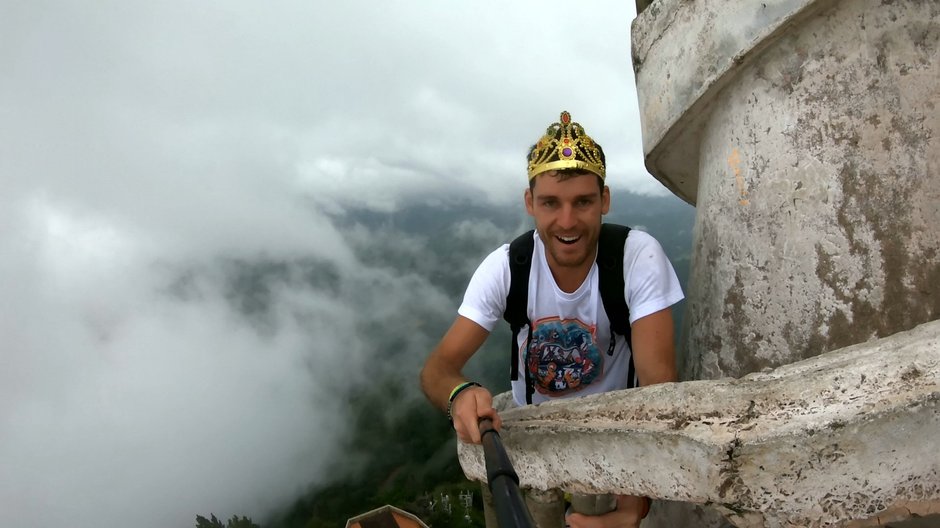 Image by: Brandon Bruce
Image by: Brandon Bruce
DON’T LOOK DOWN! This is the moment a travel vlogger got himself into a tight squeeze as he ascended the spiral stair case of the ancient Ambuluwawa Tower in Sri Lanka.
Standing on the peak of an isolated mountain at at a staggering 3567ft above sea level the elegant Ambuluwawa Tower is a mind blowing spectacle situated in Gampola, Sri Lanka.
The perilous journey to the top of the structure requires a trek up a narrow spiral staircase barely big enough for one person.
The climb is no easy task but it was small potatoes for Australian adventurer Brandon Cody Bruce who filmed his climb on a selfie stick showcasing the precarious ascent as well as some spectacular views of the Sri Lankan countryside.
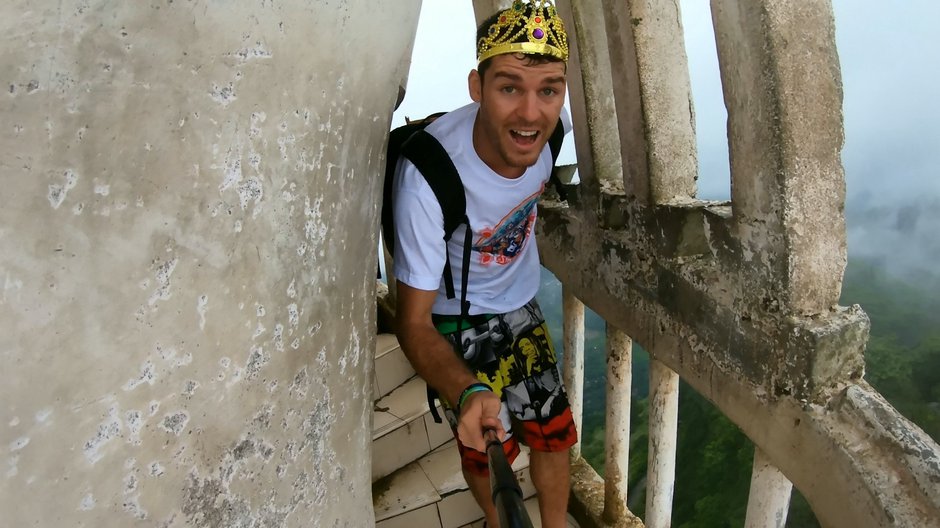 Image by: Brandon Bruce
Image by: Brandon Bruce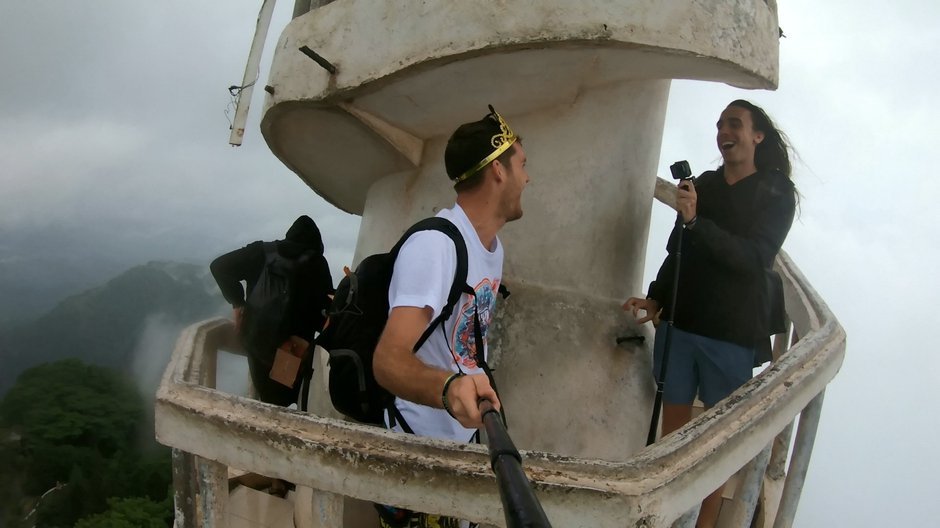 Image by: Brandon Bruce
Image by: Brandon Bruce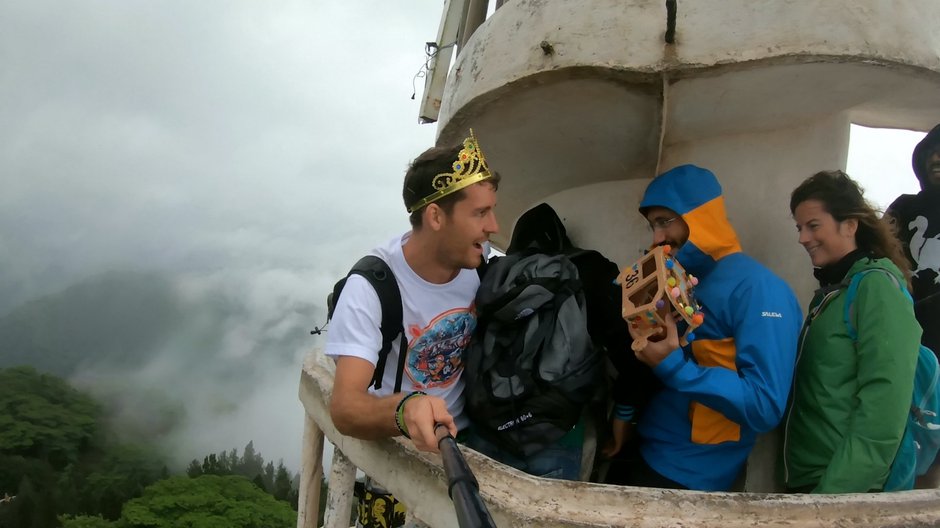 Image by: Brandon Bruce
Image by: Brandon Bruce Image by: Brandon Bruce
Image by: Brandon Bruce
Brandon, a 24-year old from Brisbane Australia who gave up the life of a fisherman for a life of round the world travel said:
“I started travelling solo at the age of 19 when I worked on superyachts around the world for 2 years, then at the start of 2019 I began full time travelling. Photography and videography have been a passion of mine for years now as well.”
“I was competing in a 10-day tuktuk tournament throughout Sri Lanka and this Temple climb was one of the challenges to complete to earn points.”
“The video shows me walking up the skinny staircase temple overlooking the beautiful scenery of Kandy and the mountains surrounding”
“It was very cloudy during this day so visibility wasn’t the best. If I could do it again I would love to go up during a clear day so I can see everything.”
Video by: Brandon Bruce
Watch incredible moment boy told he'd never walk gave a huge grin when he toddled into nursery for the very first time.
 Image by: Rielle Chapple
Image by: Rielle Chapple
A four-year-old boy told he'd never walk gave a huge grin when he toddled into nursery for the very first time - after his parents saved for his entire life to pay for an operation.
Bleu Greenwood was born with the most restrictive type of cerebral palsy and his parents were told he'd never walk alone.
But they refused to give up, and spent his entire life scrimping and saving £10,000 for a private operation which he had this summer.
And after months of intensive therapy he had his teachers in floods of tears when he walked into nursery on his own two feet for the first time, earlier this month.
With a huge cheeky grin on his face, the little lad padded into school using his walker - taking steps doctors never thought were possible.
Proud parents Rielle Chapple, 27, and Dale Greenwood, 28, said it was the best feeling in the world.
Former restaurant manager and now full time carer Rielle, from Leicester, said: "It was the most emotional moment of my life.
“It was so lovely and overwhelming to see because we never ever thought it would happen.
“It just shows how determined he is and we are so proud of him.
“We all had a massive celebration when he did walk for the first time.
"Everyone was crying because it was such a happy moment.
“And you could see how happy it made him.”
Bleu's twin died during pregnancy but he was born on August 27, 2015 at Leicester Royal Infirmary and Rielle said she had no idea he was suffering from any problems.
But Rielle, who is currently three months pregnant, said it became clear “something wasn’t right” a few hours after birth.
She said: “He was doing weird jerking movements and I knew something was wrong.
“Then when he was 10 days old he started having seizures.
“By the time he got to four months he wasn’t hitting any milestones and that’s when we got the diagnosis.
“They said it was the most severe case of cerebral palsy and said he’d never be able to talk.
“But they also said even with surgery he’d never walk."
Bleu's has stage five cerebral palsy - the kind with the most limited movement - so was not eligible for an operation on the NHS.
But his parents refused to take no for an answer and started fundraising when he was just ten months old.
They finally raised £10,000 so he could have selective dorsal rhizotomy surgery privately in June.
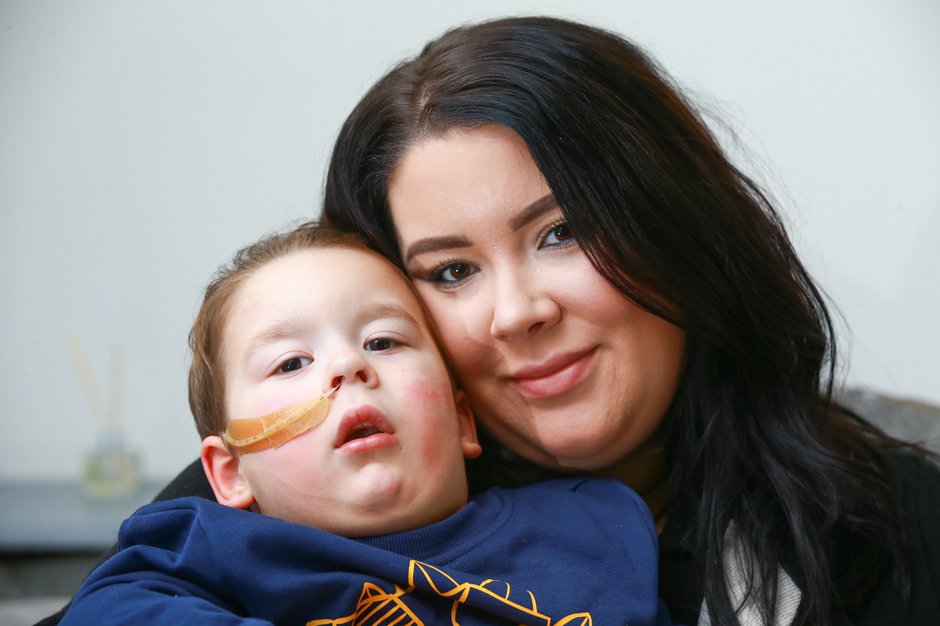 Image by: Tom Maddick SWNS
Image by: Tom Maddick SWNS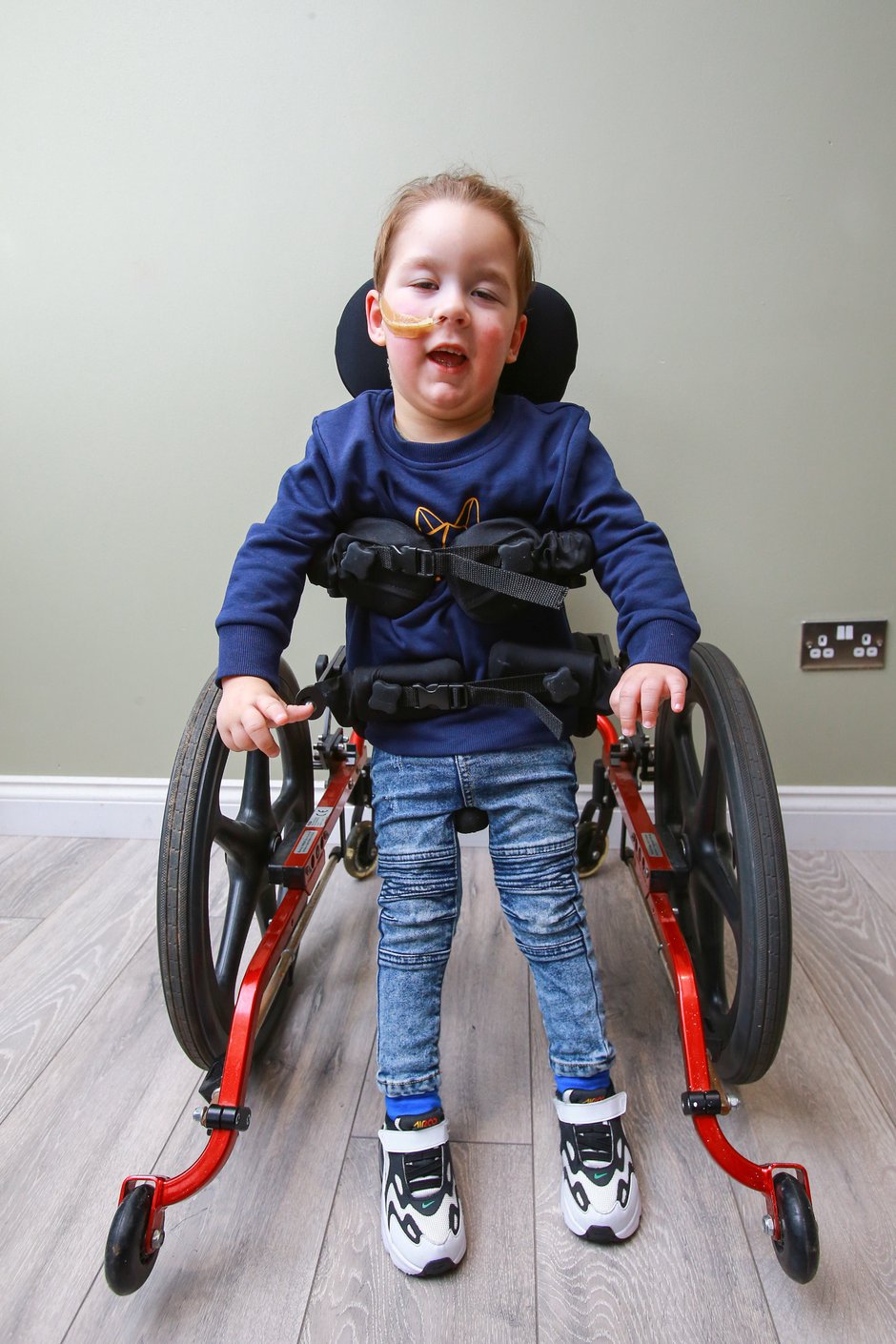 Image by: Tom Maddick SWNS
Image by: Tom Maddick SWNS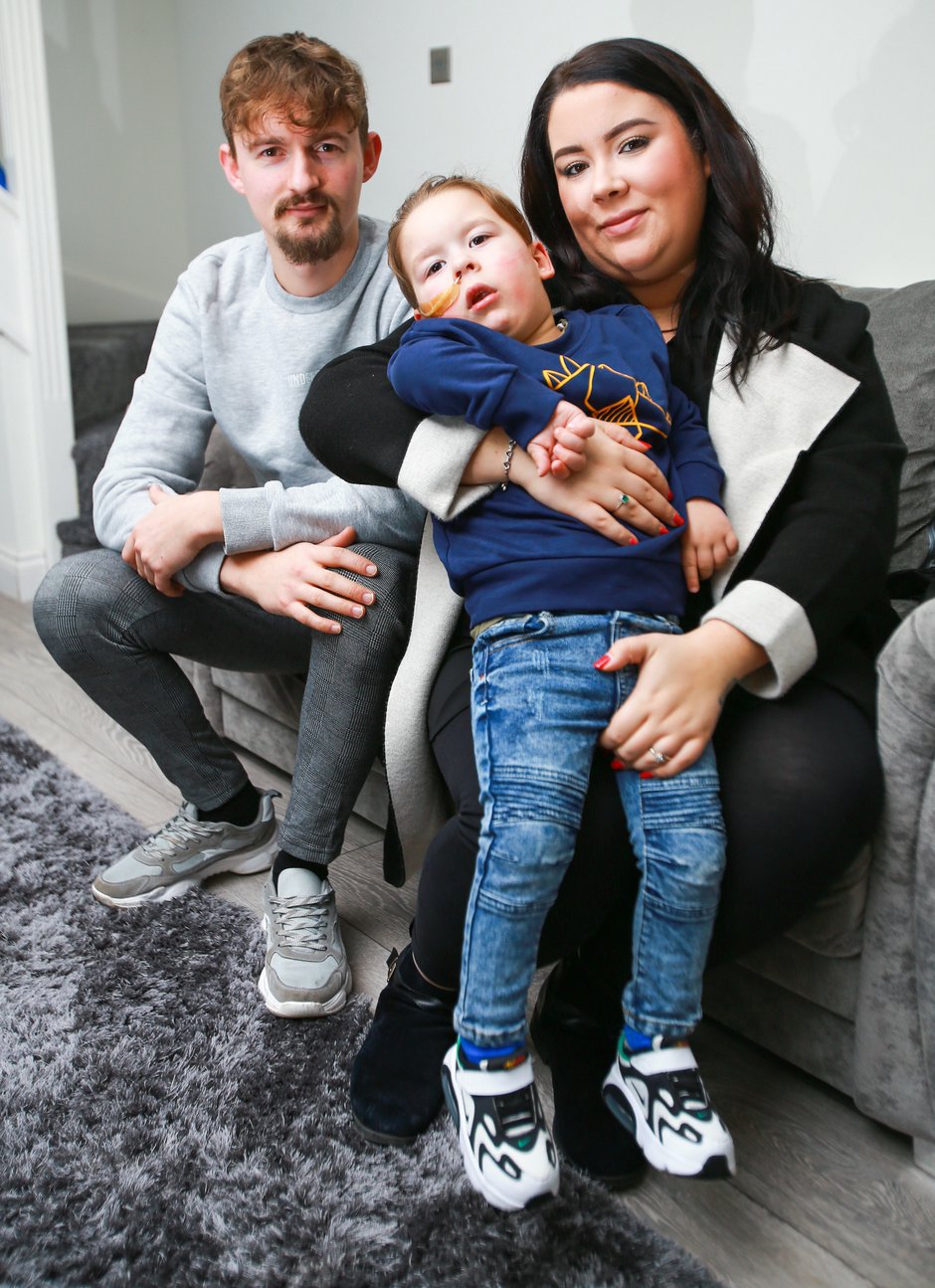 Image by: Tom Maddick SWNS
Image by: Tom Maddick SWNS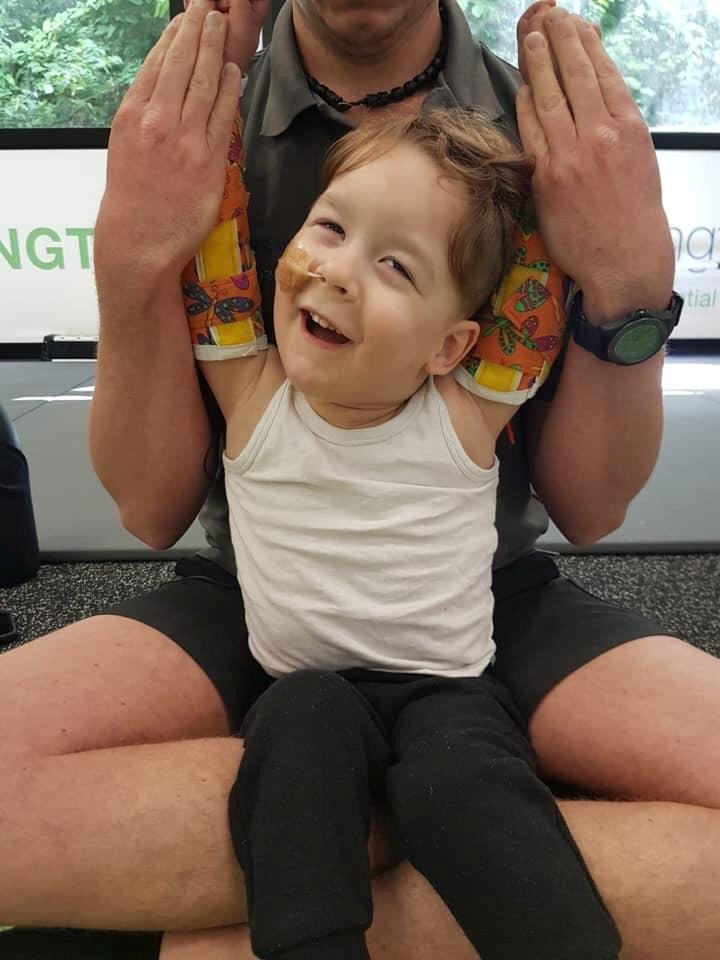 Image by: Rielle Chapple
Image by: Rielle Chapple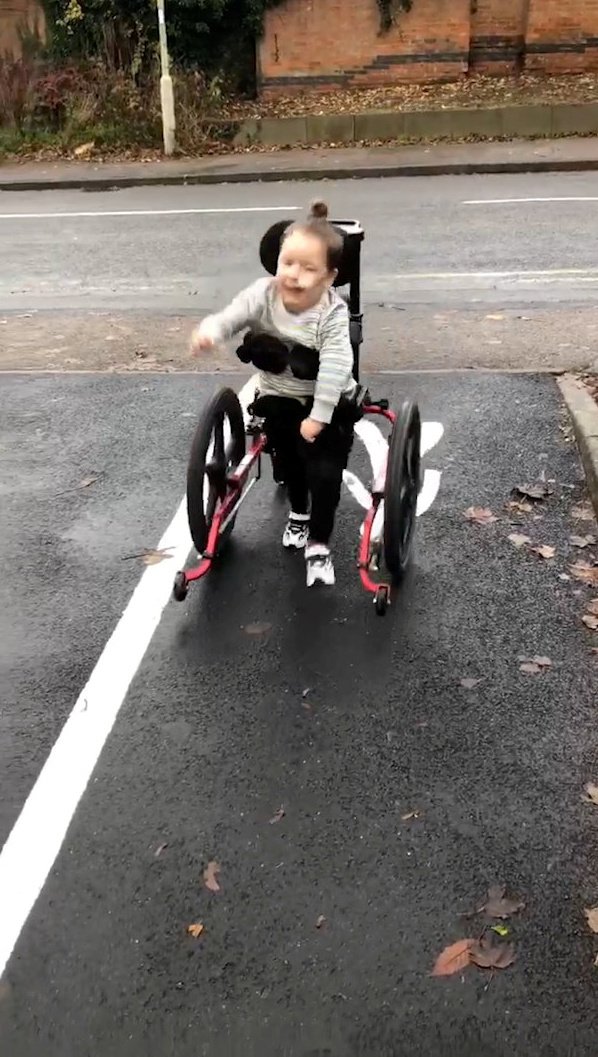 Image by: Rielle Chapple
Image by: Rielle Chapple
The operation at Nottingham’s Queen’s Medical Centre saw surgeons cut the nerve rootlets in his spinal cord which were sending abnormal signals to his muscles, causing them to contract and stiffen.
Rielle said: "We wanted to do anything we could to help him.
"We have fundraised for this operation his whole life, but it is only really beneficial to him if it is followed by intense therapy."
Post-op Bleu travelled all over the UK for intense physiotherapy sessions, costing £90 an hour.
And after five months of sessions, Bleu was finally able to take his first steps in the park using his walker, on November 13.
A day later he dazzled his friends and teachers at Wigston Menphys Nursery School by walking into school.
Rielle said: “He has made so much progress since surgery and has improved massively.
“He has no pain now and is on a really good path moving forwards.
“We will try to get the best out of him, for his sake.”
His great strides come despite him being hospitalised for infections and breathing difficulties in January.
At the time Rielle and catering manager Dale were told to “prepare for the worst”.
But little Bleu, who has also battled pneumonia, staphylococcus infection and sepsis twice, pulled through.
Bleu’s parents aren’t sure what the future holds.
Rielle said: “He is very severe and does have a shortened life expectancy.
“For us we just want to make him as happy as we can for as long as we can. I want to make him smile as much as we can.
“The operation has made him more independent and has improved his quality of life massively.”
Rielle and Dale are constantly fundraising to help pay for expensive medical and physiotherapy bills.
https://just4children.org/children-helped2018/bleus-journey/
Video by: Rielle Chapple
AFTER LIFE - A retired model is hoping her body will continue to help when she has gone by donating it to science - after posing in the nude while well into her seventies
 Image by: KM Group
Image by: KM Group
A retired model is hoping her body will continue to help when she has gone by donating it to science - after posing in the nude while well into her seventies.
Yvonne Vinall spent more than 30 years undressing as a nude life model, "wearing nothing but a choker and a smile."
But now the 86-year-old has vowed to continue helping people well after she has gone, by donating her body to the London Anatomy Office.
A risque portrait of Yvonne is said to have been mounted in Clarence House, home to the late Queen Mother.
The widow, from Tunbridge Wells, Kent, said: "I did a lot of work over the years, and towards the end much of it was private, where I wouldn't get paid in cash but I'd get the painting itself, which was much more valuable.
"Artists don't look for superficial beauty - they might focus on a particular body part such as a hand or a foot.
"Ultimately though, it's in the eye of the beholder, as they say.
"Eventually I became a bit bored of doing the same thing and I wanted to quit while I was on top."
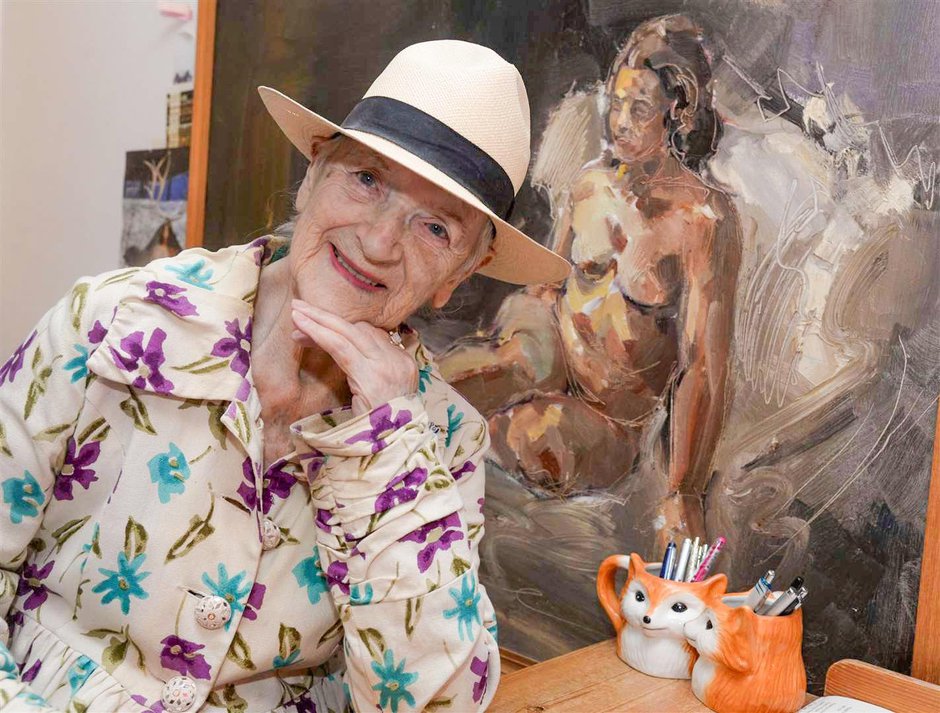 Image by: KM Group
Image by: KM Group
In future, her body is going to be used to help educate medical students, after she received a certificate confirming her donation to the London Anatomy Office.
She said: "How on Earth are students going to learn and pass their exams unless they have a human body to look at?
"I might still feel like a mischievous 18-year-old inside, but I have a pacemaker, I've had my cataracts done, and I have false knees, hips and shoulders.
"When they get me on the slab, they will have an awful lot to work with."
Kings College London says anyone older than 17 can donate their body, and while there is no upper age limit, there is no guarantee a donation will be accepted.
Yvonne, who was 40 when she first started life modelling, added: "I think people are frightened of talking about death and scared of dying itself.
"I'm not at all scared, although all my friends say God will probably keep me down here for as long as possible."
TRANSPLANT HEARTBREAK - Devoted young mum is training to become a transplant nurse - after her husband tragically died from heart transplant complications
 Image by: Lee Mclean SWNS
Image by: Lee Mclean SWNS
A devoted young widow has started training to become a transplant nurse - after her beloved husband tragically died from heart transplant complications.
Brave Louise Hughes, 26, was heartbroken in May 2018 when Dave, 32, the father of her baby boy, passed away 11 weeks after getting a new heart.
Employed as a nursery worker at the time, Louise was inspired to embark on her new career after being overwhelmed by the "amazing" nurses who cared for her husband.
The mum-of-one started an access course at college just four months after Dave's death and started a three year adult nursing degree last month.
When she qualifies Louise wants to specialise as a transplant nurse and work at Wythenshawe Hospital, where her husband received much of his care.
Louise, from Wigan, said her and Dave's son George, now three, knows all about his daddy and is aware of the journey his mum has embarked on.
The University of Salford undergraduate said: "Losing Dave was the hardest thing George and I will ever go through.
"Even though it was so painful it was amazing to see the way the nurses cared for him and also dealt with us.
"I developed such a close bond with them.
"At the time I did think to myself that I'd like to be involved in helping people somehow.
"But I never thought I would be clever or brave enough to become a nurse."
Just a month after Dave passed away, while Louise was still grieving the tragic loss, she decided she wanted to become a transplant nurse.
She applied to get on to an access course and within just a few months had begun attending classes.
Louise said: "I decided that I could make a difference and help people in the same way I was helped.
"As the family member of a transplant patient I'll know exactly what people are going through.
"I feel like I'm in a perfect position to do the job well."
Her husband Dave, a trainee mechanic, had fought serious health problems since birth because of a congenital heart defect meaning his main arteries were the wrong way round.
In 2013, one year after he met Louise, Dave's condition deteriorated to the point doctors told him he would eventually need a heart transplant to survive.
In February 2018, as Dave’s health was beginning to decline, the family received the life-changing call they had been waiting for and travelled the Newcastle Freeman Hospital to undergo the gruelling 12 hour surgery.
He was unconscious for two and a half weeks after the op, and Louise arranged for their wedding to take place in hospital on March 23, once he woke.
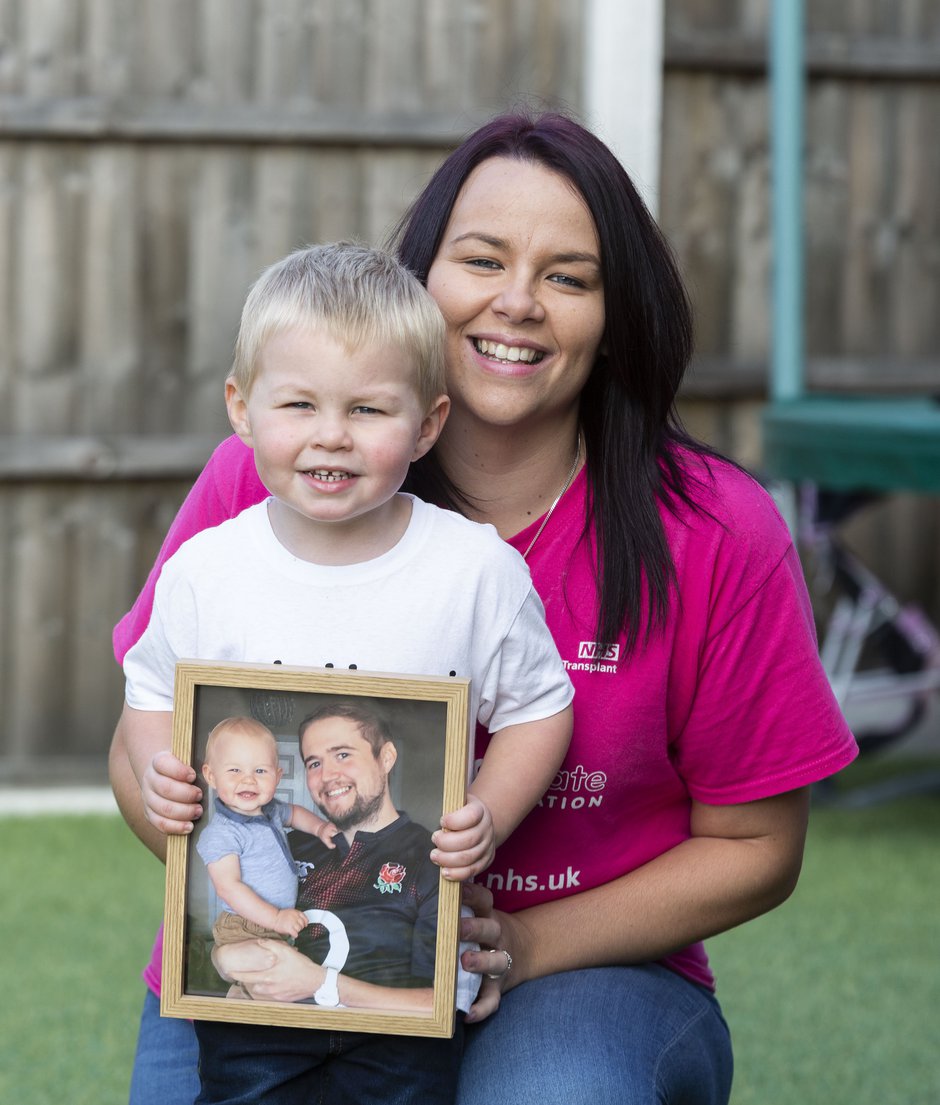 Image by: Lee Mclean SWNS
Image by: Lee Mclean SWNS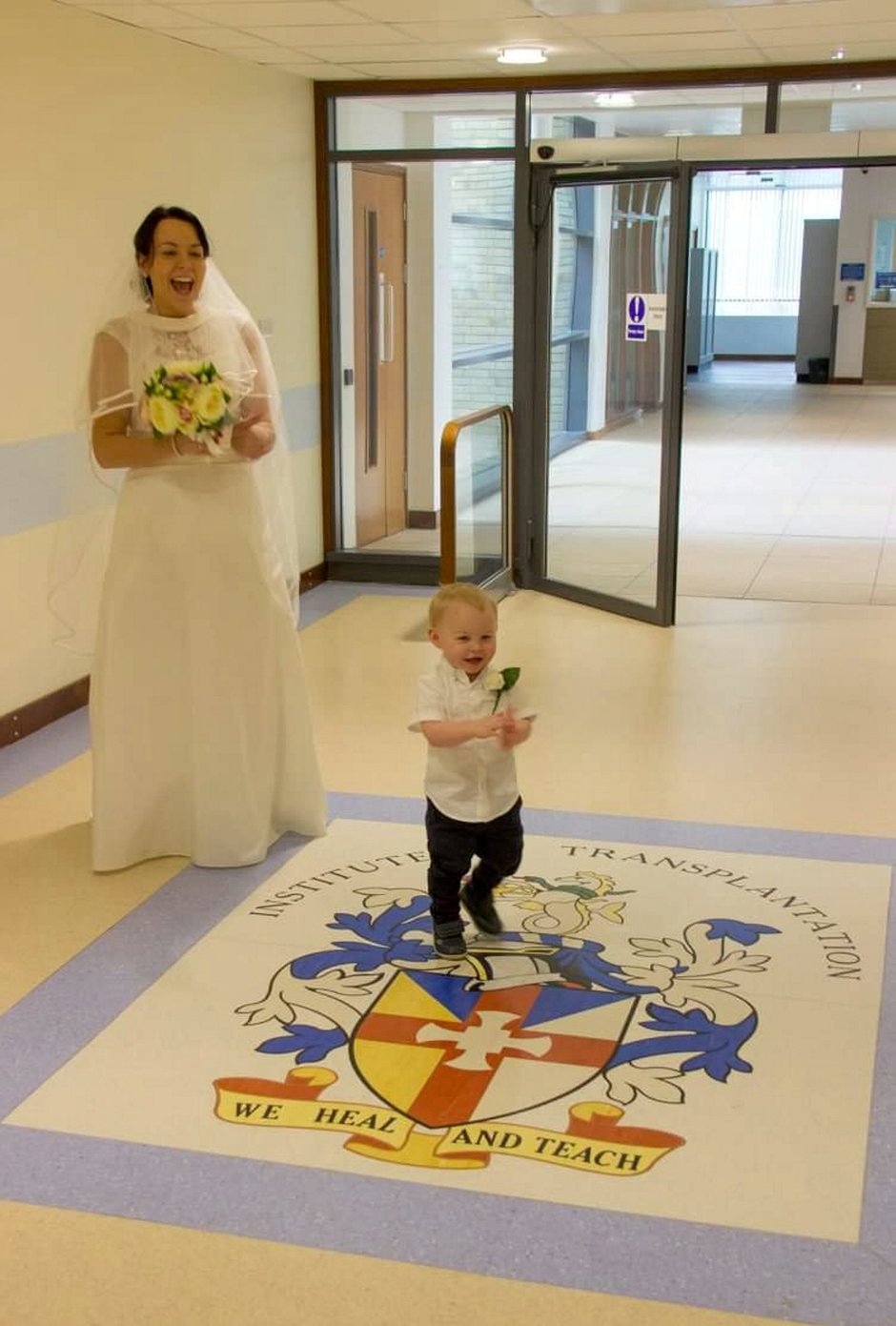 Image by: Louise Hughes
Image by: Louise Hughes Image by: Lee Mclean SWNS
Image by: Lee Mclean SWNS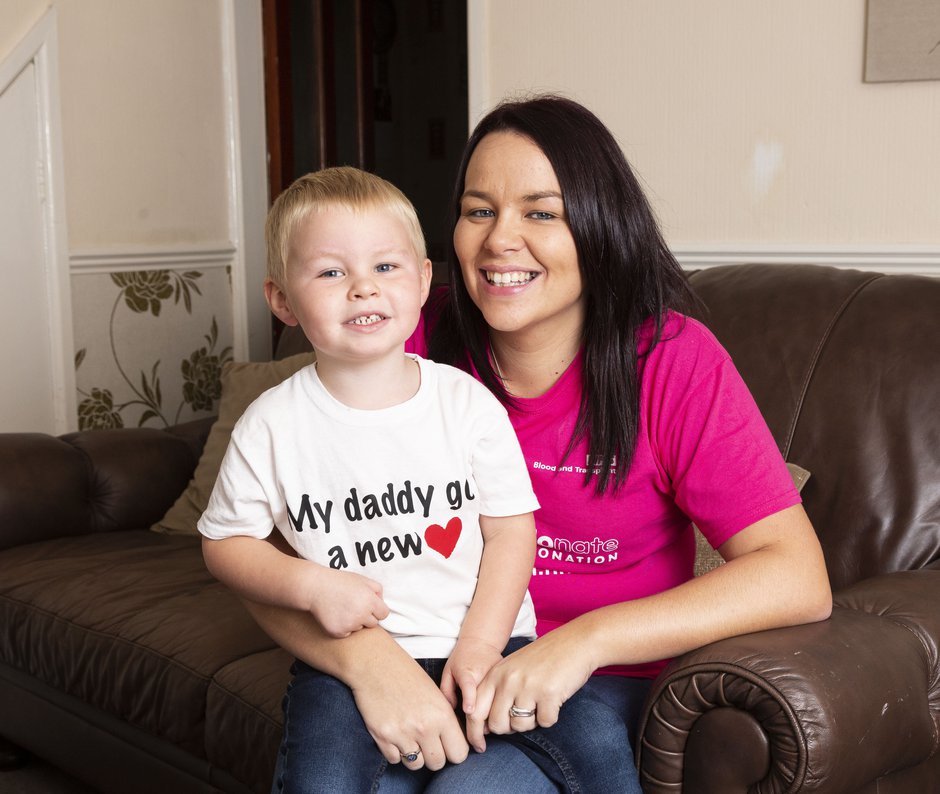 Image by: Lee Mclean SWNS
Image by: Lee Mclean SWNS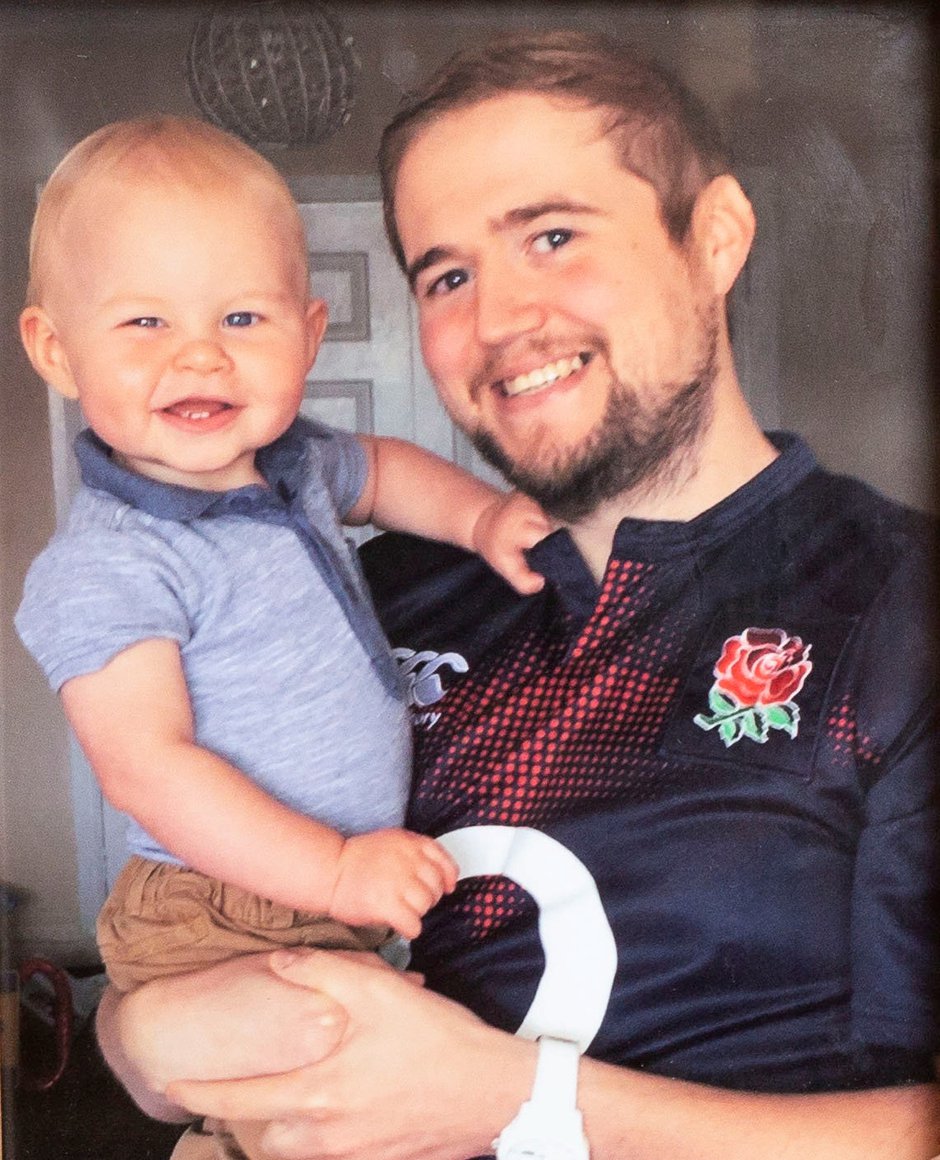 Image by: Matthew Newby SWNS
Image by: Matthew Newby SWNS
The ceremony, with only nine close family members and friends including baby George, was arranged by hospital staff.
Just six weeks after their marriage, while Dave was still at Newcastle Freeman, his health took a drastic downturn as it emerged his donated heart was failing.
In order to have another heart transplant he would have had to regained enough strength to undergo a significantly more risky procedure.
The suffering dad was also told that this might not be possible until at least the end of the year, in order to give his body the maximum chance of recovery.
But Dave did not want to put his family and friends through any more pain and he broke the news to his heartbroken family that he was going to die.
He passed away in Louise's arms on May 1, 2018,
Louise and her family now host a memorial fundraising event on February 22 every year, which was the day in 2018 Dave got his heart transplant.
The drive is to raise money for the Freeman Heart and Lung Transplant Association (FHLTA), which supported the family throughout their ordeal.
"The FHLTA were absolutely incredible throughout Dave's illness," Louise said.
"I had to give up work because I was missing so many days and they stepped into help.
"We were given accommodation at the hospital so we could stay over and they even said they would pay for my petrol between there and Wigan.
"When you're in that situation the last thing you want to worry about is money.
"Raising money for them now to say thank you is the least we can do."
Within the past 18 months Louise and her family have raised a whopping £21,000 for the FHLTA.
Their events, which also pay tribute to Dave's donor, include raffles, prizes and donation boxes.
A spokesman for the Newcastle Freeman Hospital, where Dave was treated, has this afternoon thanked Louise for her tireless fundraising.
They said: "We never fail to be humbled by the people who support us and Louise has been an inspiration both in terms of campaigning to raise awareness of the importance of organ donation and in raising funds.
"We are really grateful for her support."
One of Louise's main goals is to have people arrange for their organs to be donated before they pass away.
You can donate here: https://www.justgiving.com/crowdfunding/fhlta?utm_id=66&utm_term=xk68YzkZV
Video by: Gabriella Petty
Bizarre footage shows a collection of kitties that appear to have HUMAN faces
 Image by: Tatiana Rastorguev
Image by: Tatiana Rastorguev
This bizarre footage shows a collection of cats that appear to have - HUMAN faces.
The unsettling yet still incredibly adorable kittens are the result of painstaking selective breeding.
Tatyana Rastorgueva, a 44-year-old felinologist and animal lover, has been breeding cats since 2002.
The unusual Maine Coons are the result of breeding father cat Vatican and mother cat Lucien.
All of the kittens in her care have a recognisable ‘face’ and piercing eyes.
Tantyana manages the Instagram account @catsvill_county and regularly takes videos of the unique cats to share with her eighty-thousand followers as well as the rest of the Internet.
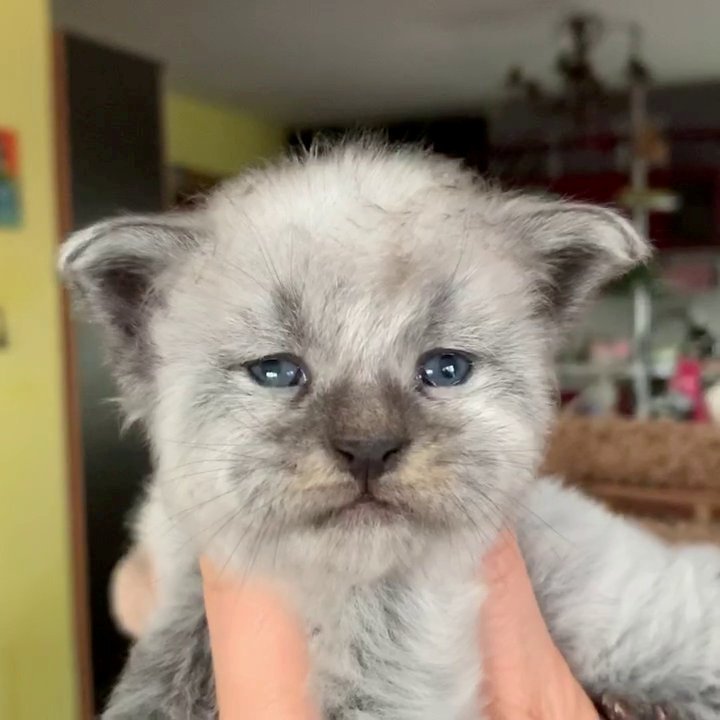 Image by: Tatiana Rastorguev
Image by: Tatiana Rastorguev Image by: Tatiana Rastorguev
Image by: Tatiana Rastorguev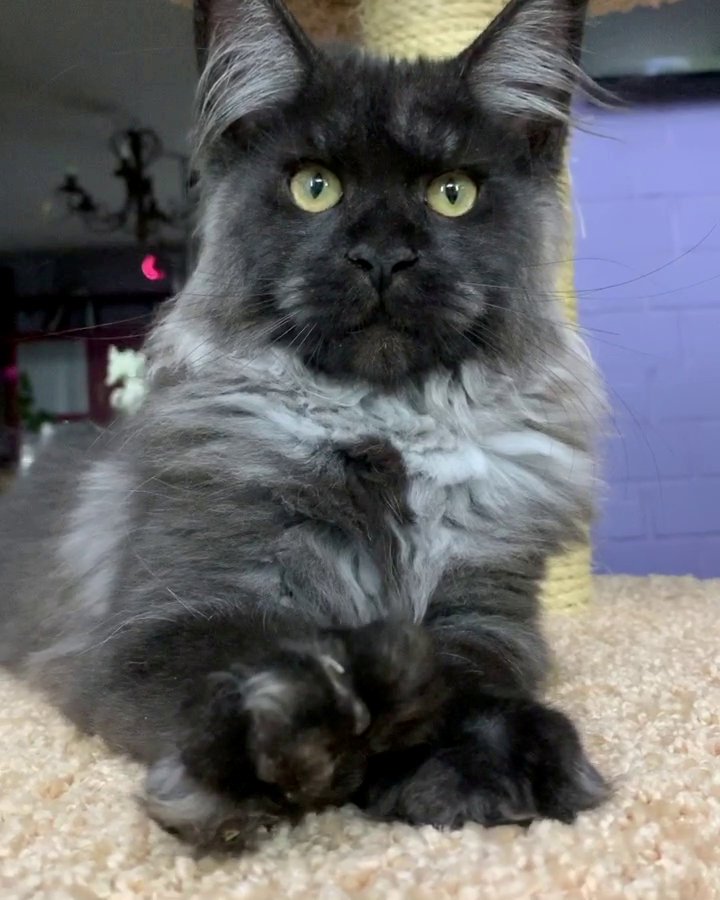 Image by: Tatiana Rastorguev
Image by: Tatiana Rastorguev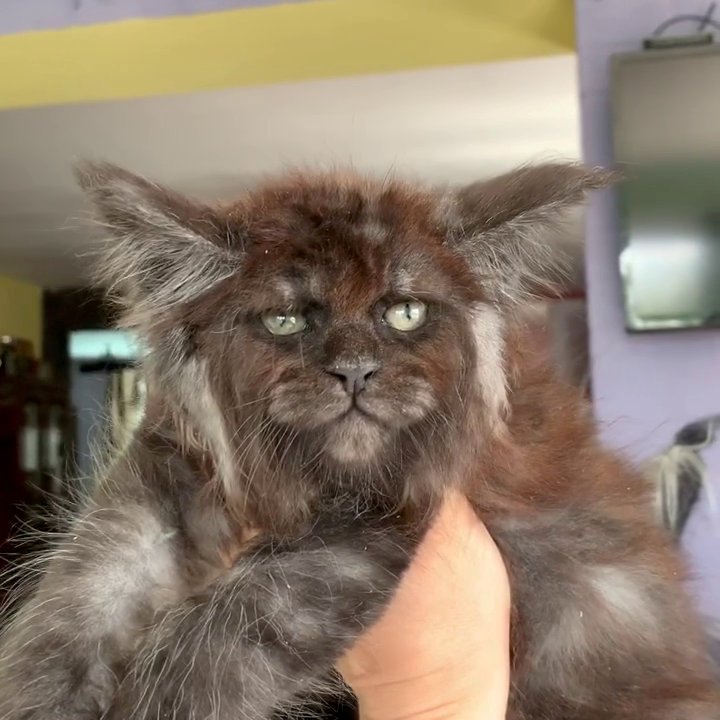 Image by: Tatiana Rastorguev
Image by: Tatiana Rastorguev
Tatyana from Moscow, Russia said: “I really love animals, cats have always been a part of my life.
''But I began to professionally breed cats in 2002, I have been working directly with Maine Coons since 2004. I like what I do, I can say that cats are my calling.
“Each breeder has his own vision of the breed and selects individuals for further selection according to those traits that are important to him.
''I can say that while working with the breed, I focused on the type of Maine Coon that I like, that's why I now have a recognizable ‘face’ type of kittens in my nursery.
''This is just a long painstaking work of the breeder.I love all animals, especially cats. Maine Coons captured my heart completely.''
Video by: Gabriella Petty
Pregnant mum suffering from the same extreme morning sickness as Kate Middleton claims she has cured her chronic vomiting by smoking CANNABIS
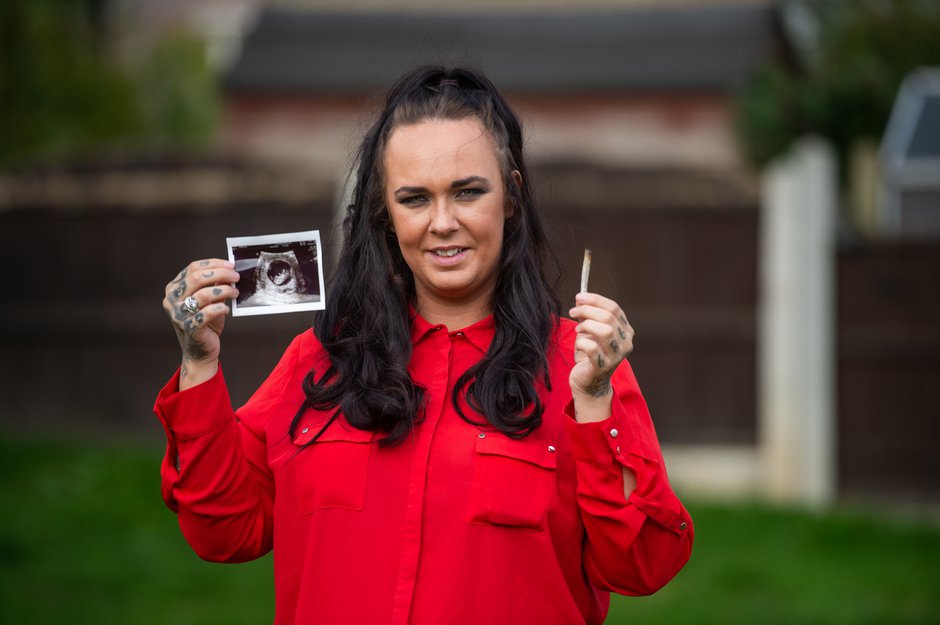 Image by: Dan Rowlands SWNS
Image by: Dan Rowlands SWNS
A pregnant mum suffering from the same extreme morning sickness as Kate Middleton claims she has cured her chronic vomiting by - smoking CANNABIS.
Sammy Warnes, 30, said her hyperemesis gravidarum was so bad when she was ten weeks pregnant with daughter Arabella, now three, she considered an abortion.
Strong medication from her doctor didn't work, so she turned to cannabis, having a puff or two on a joint, until the symptoms disappeared at 25 weeks.
She said her daughter was born fit and healthy, so when she experienced the same symptoms with her current pregnancy, she once again ignored expert advice.
Now 15-weeks pregnant with her second child, Sammy said she she has had no choice but to resort to smoking cannabis a few times a week to alleviate her symptoms.
She spends £10 every three weeks, and gets her supply from the internet.
Former catering worker Sammy said she got the idea after she came across an online forum about severe morning sickness which included messages from other mums-to-be using the Class B drug.
Sammy, from Leeds, said: "The thing is the prescription drugs do more damage.
"There's risk of birth defects so they're quite scary to be fair.
"One of them was making my body do random movements. That stuff panics me.
"It's actually saved both me and my baby's life.
"This time round has been ten times worse.
"I've had to give my job up because I just couldn't do anything.
"With just two puffs I'm able to be a parent to my daughter.
"I only do it a few times a week.
"I can do normal things like go to the shops, take her to nursery and just be a mum.
"Beforehand I was just being sick or waiting around to be sick.
"I was just knackered.
"People will say 'Oh she just wants to be a druggie' but it's not that at all.
"But I don't get high off it.
"It's a couple of puffs with a minimum bit of baccy.
"There needs to be a conversation about this so other women know there's something out there that can help them.
"Unless you've been through it you don't really get it."
After experimenting with cannabis a couple of times in her teenage years, Sammy decided to use the drug again when she was ten weeks pregnant with her third child in 2015.
Doctors had prescribed her Domperidone - a drug is used to relieve nausea and vomiting - but she claims the symptoms only temporarily disappeared for 20 minutes.
After weeks of sleepless nights and chronic vomiting, she decided to Google any alternative ways to combat her illness.
She discovered several forums suggesting cannabis as a solution, she claims.
She said: "I decided to do my own bit of research.
"It was all getting too much.
"I wanted to see if there were any old-wives tales or 'old fashioned tips' that would help me out.
"Then I found quite a few forums on women using cannabis to stop their morning sickness.
"I was so desperate I thought I'd give it a go.
"I was a bit nervous when I first did it but I was reassured by all the things I read on the forums.
"I think anyone would be at first.
"It was to medicate my body, not to get stoned.
"I'm not abusing it or trying to get blazed.
"Some days I have good days and don't need it.
"Other days I am throwing my guts up and need a couple of puffs.
"I got some a few days later and as soon as I took it the symptoms just went away.
"It wasn't just a case of me feeling sick the whole time. I couldn't do anything at all.
"It was amazing - it helped me get out of bed in the morning.
"It literally worked straight away.
"I just couldn't believe it.
"I didn't tell my midwife as to be honest I didn't want to cause unnecessary stress."
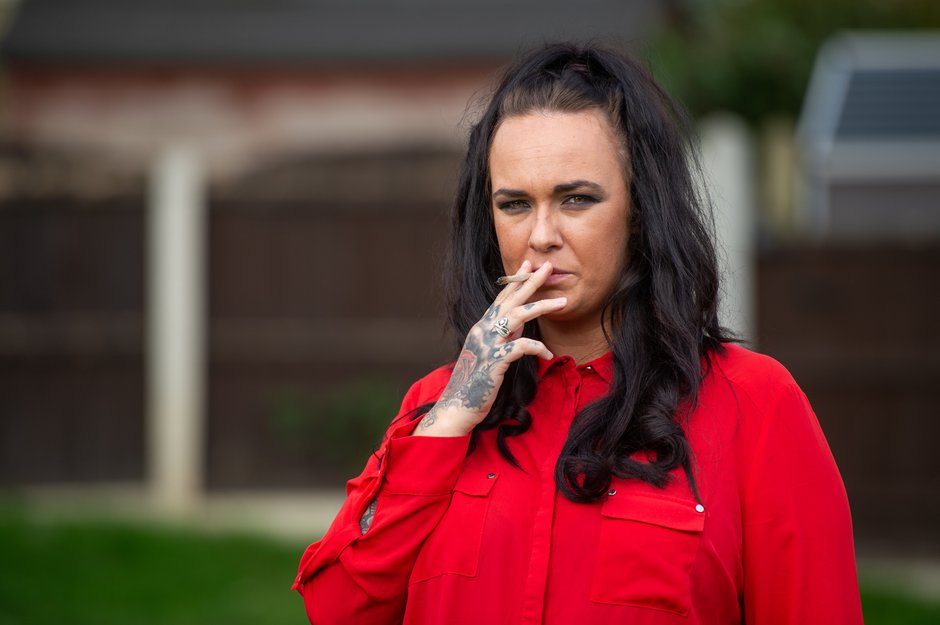 Image by: Dan Rowlands SWNS
Image by: Dan Rowlands SWNS Image by: Dan Rowlands SWNS
Image by: Dan Rowlands SWNS Image by: Dan Rowlands SWNS
Image by: Dan Rowlands SWNS
NHS guidelines say using cannabis regularly during pregnancy could affect a baby's brain development and smoking with tobacco increases the risk of the baby being born small or premature.
But Sammy claims her daughter, who arrived in June 2016, weighing a healthy 6lb 2oz, is healthy both mentally and physically", and she stopped taking the drug,
After discovering she was pregnant again in August this year, Sammy was hoping her chronic morning sickness wouldn't make a return.
But she returned to her doctors to complain her hyperemesis gravidarum had returned when she was six weeks pregnant and she was signed off work.
Sammy said: "I was put on the tables again but the same thing happened.
"The sickness would disappear for about 20 minutes but then I'll be back to hugging the toilet all day.
"I've had no choice but to take it.
"It worked so well last time.
"This time the sickness was ten times worse and I was considering having a termination."
Despite the taboo surrounding smoking cannabis, Sammy said she has both the support of her friends and family.
She said: "I smoke it in my back garden in the mornings.
"My family are very anti-drugs and when I told them they initially kicked off.
"But when I told them the full story, they were like 'if it works for you that's fine'.
"My partner is really supportive. He noticed the difference straight away.
"My half-siblings are supportive too. They have family members who use it to treat cerebral palsy and cancer.
"I've never told a midwife because I know I'll get stick."
"Now I can do a food shop, do the house cleaning and take my little girl to nursery," she said.
"When you can't do that and you have that extreme sickness it's just awful.
"The tablets have side effects of birth defects. That is known.
"My little girl is fit and healthy and is getting along fine at nursery.
"I'd rather just take a couple of puffs of weed.
"There are thousands of women doing the same.
"But there isn't a conversation about it because they are scared their midwives will grass them up to social services.
"I want to speak out because there is something out there which can help other women.
"There's chat about cannabis being used as medicine for chronic illnesses.
"I just want to help and tell other women."
As many as eight in every ten women experiencing morning sickness as a side effect of pregnancy with symptoms improving or disappearing around 14 weeks.
But those who experience hyperemesis gravidarum can see symptoms last for half fo their pregnancy.
NHS guidelines advise those who experience severe symptoms to contact their midwife, doctor or hospital to seek treatment.
Sammy and partner Gav, 32, are expected to welcome their first child together in May 2020.
WELCOME TO THE JUNGLE - A dog walker was left stunned after seeing this massive RHEA in a forest already known as the capital of Britain's booming wild boar population
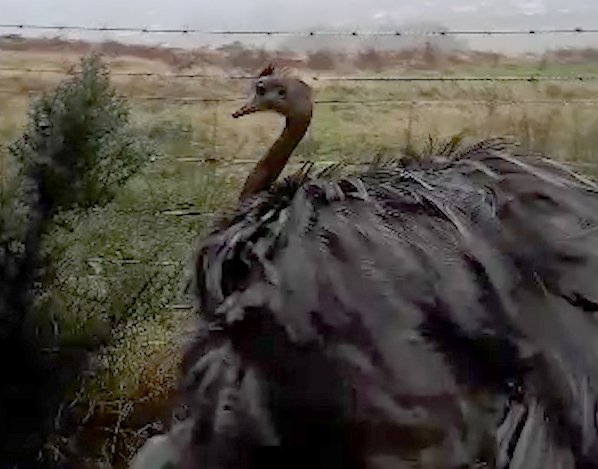 Image by: Jason Burford
Image by: Jason Burford
A dog walker was left stunned after seeing this massive RHEA bird - in a forest already known as the capital of Britain's booming wild boar population.
Shocked Jason Burford was out walking his dog Molly in the Forest of Dean when he stumbled upon the huge 6ft avian.
The 48-year-old was stopped in his tracks by the sight of the bird rounding a corner.
He then advanced towards creature and filmed it on his phone before it eventually ran off into the distance.
An animal expert has confirmed it is likely the bird escaped from a local collection.
Jason has already seen wild boar in the area which is currently one of the centres of the UK's booming population.
Boars there have attacked animals, people, dug up gardens and playing fields and have even learned when bin day is so they can rummage in them for food.
British woodlands are increasingly populated with exotics species - including parrots, wallabies and big cats.
Jason, who keeps chickens and bantams at home, said: "I hadn't been there for years but I went on a whim as I used to live there.
"I just rounded the corner and there it was. I'm used to it though, living in the forest. I wasn't worried.
"The dog is good around other animals. But, for someone else, it could have been a shock.
"It could have done an untrained dog some damage. Some don't even come back to their owners in the garden.
"It's a funny story but it could have been nasty. I was just trying to get it off the track."
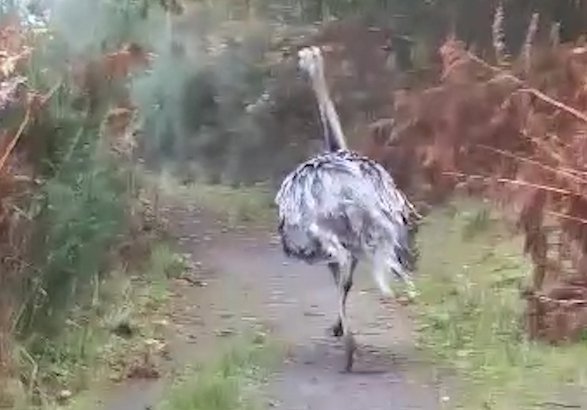 Image by: Jason Burford
Image by: Jason Burford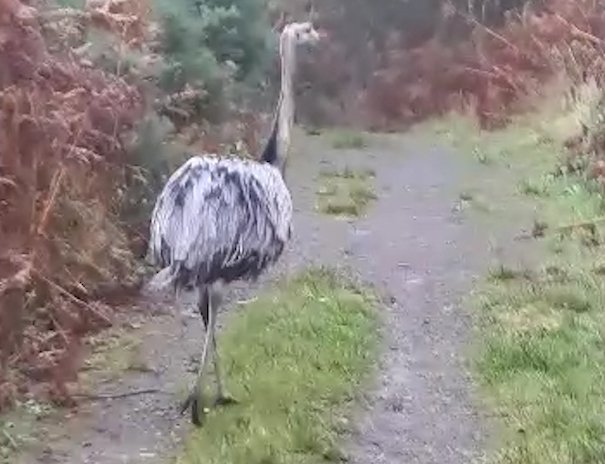 Image by: Jason Burford
Image by: Jason Burford
Retired Jason, from Cinderford, Glos., said the bird was almost six feet tall from where he was standing - making for an imposing sight.
He added: "I stopped videoing but you want to see it with its feathers fully stretched out!"
Mr Burford claims that the bird escaped from a nearby field where some animals had been abandoned.
He said: "I've since discovered where it came from. It's been reported to the RSPCA."
Rheas are not the only large animals to be running free in the Forest of Dean.
The area has also suffered problems with aggressive wild boars in recent years - something Mr Burford has experienced firsthand.
He said: "I have had them run at me and chase the dog. You don't want that happening. They really frighten you.
"Once the dog ran off into the bushes and a huge boar suddenly appeared. Well the dog came straight at me - so the boar came too!
"I'd watched a film about bears the night before and it said what you have to do is make yourself big and scream 'AAAARGH' so I thought I'd do that.
"The boar just stopped in its tracks and left! They're a pain in the a**."
A spokeswoman for the Royal Society for the Protection of Birds confirmed the bird was a rhea yesterday (Tues).
She added that is had likely escaped from a local collection.
Jason spotted the bird on November 3 in the area of Drybrook, Glos. Molly is a cross between a Border Collie and a Labrador.
Video by: Gabriella Petty
Family bring Christmas forward so terminally ill son can celebrate it with them
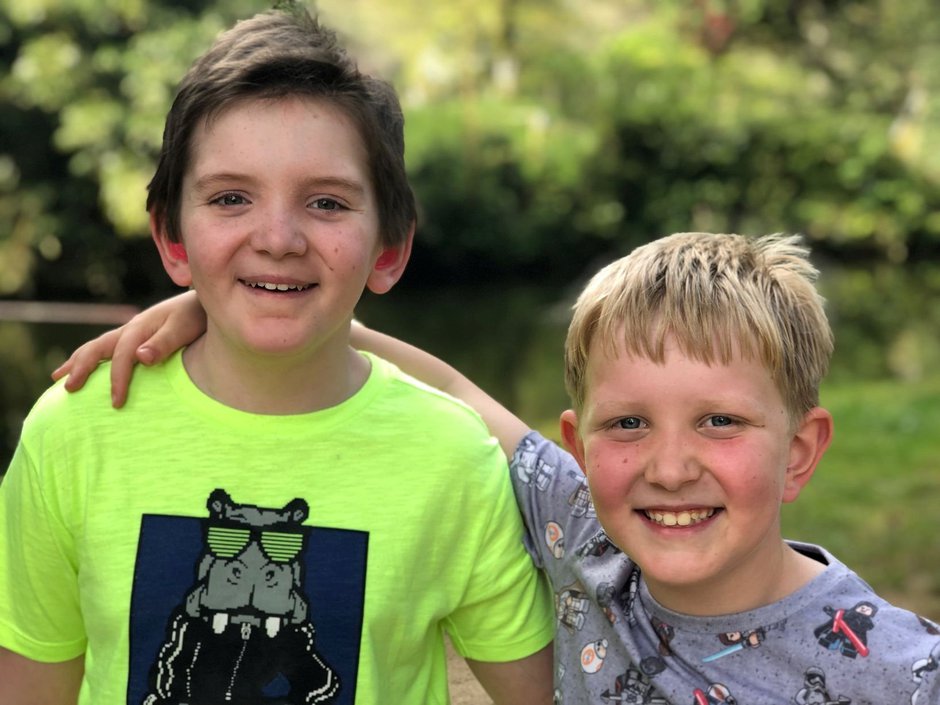 Image by: Simon Galloway
Image by: Simon Galloway
The family of a terminally ill boy who is the only one in Britain with a rare disease are celebrating Christmas months early amid fears he might not live to the end of the year.
Oliver Brown, 11, suffers from an extremely rare disease called Myelodysplastic Syndrome - a blood cancer affecting just four children per million worldwide.
He is the 'only boy in Britain' with the disease and at the time of his diagnosis at the age of eight.
Now his family have brought forward Christmas in case Oliver, from Plymouth, Devon, doesn't make it to December.
Over the last three years, Oliver has undergone two bone marrow transplants, and until very recently was at home recovering with his dad, Mike, and mum Nicola.
Sadly, Oliver's condition has worsened in recent weeks and the family fear their hopes of him enjoying a proper Christmas may be dashed.
They've put up their decorations and tree inside their home, donned their festive jumpers and even put lights outside their home, so he can celebrate with his brother.
Dad Mike, 39, said: "We have the lights up, the tree is up inside, we have the Lego winter village all made.
"The only thing missing is a real Christmas tree but the place we always buy it from doesn't start selling them until November 17.
"We're using a live tree at the moment and a fake one in the lounge - but everything else is up like it's Christmas. The Christmas movies are on, the Christmas songs are playing."
The Brown's family home has become a typically festive scene with an array of lights strung outside while inside they have a festive tunes, films and Christmas presents.
Mike continued: "I'm sure there's been a few people driving past thinking, 'but it's October'. It is - but we're having Christmas now."
Mike said it's accepted that it is unlikely Oliver will see Christmas which is, like for most children, his favourite time of year.
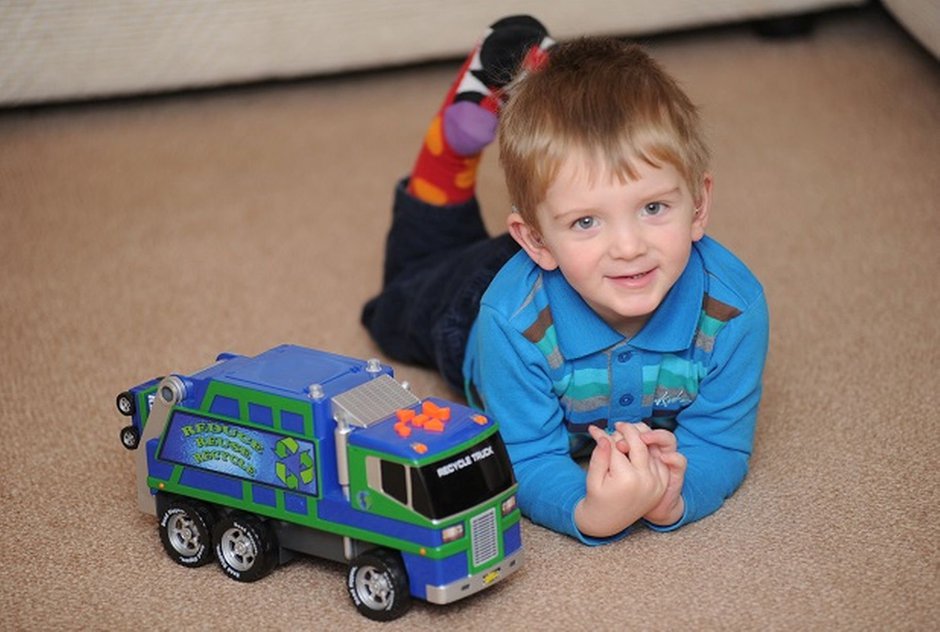 Image by: Simon Galloway
Image by: Simon Galloway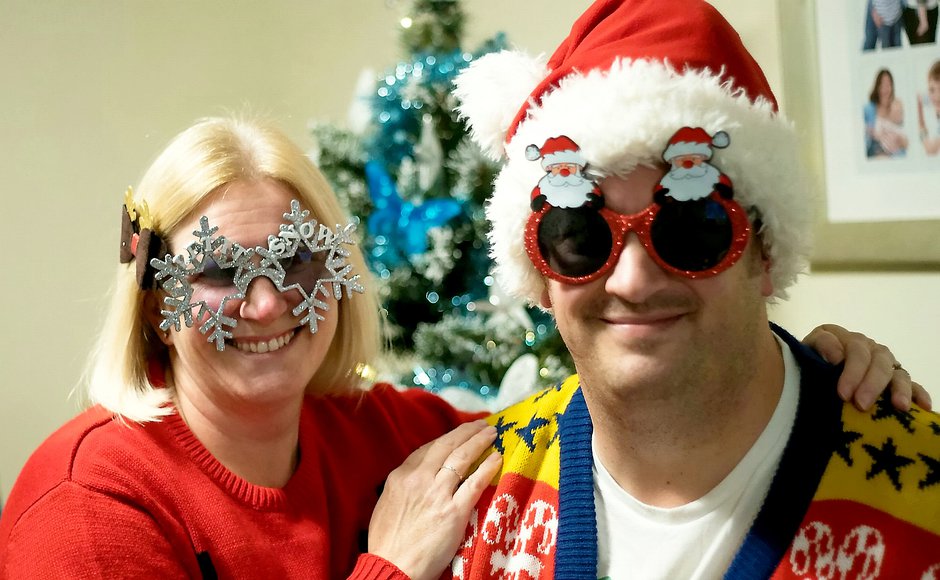 Image by: TM Plymouth Herald
Image by: TM Plymouth Herald Image by: TM Plymouth Herald
Image by: TM Plymouth Herald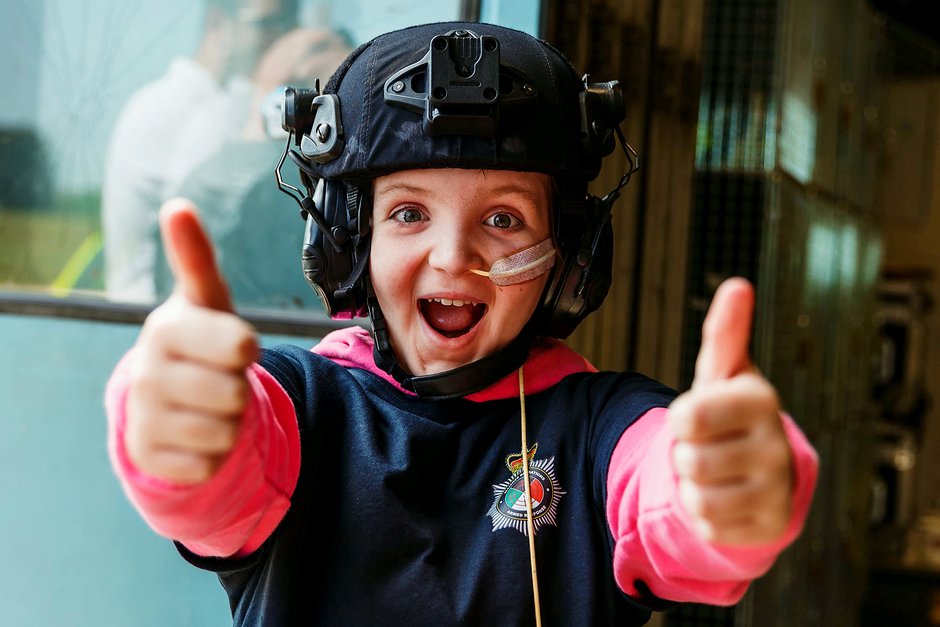 Image by: Steve Chatterley
Image by: Steve Chatterley
The family would usually put up the decorations on December 1 and get "a good run" for Oliver and his brother, Benjamin.
He added: "We decided to bring it forward for him and Benjamin, to enjoy together. In our minds he made it to Christmas 2019.
"He loves Christmas, so it's the right thing for us all."
Oliver developed Myelodysplastic Syndrome aged eight, as a result of a complicated genetic disorder relating to his GATA2 gene, which also resulted in Oliver being born deaf.
However, after two rounds of tortuous treatment, including two bone marrow transplants, he was told in May there was no further curative options available.
The family say they are now spending whatever time he has left making precious memories.
Earlier this year Oliver fulfilled a dying wish of being a police officer for a day when kind-hearted cops pulled out all the stops to make it happen.
Oliver and his eight-year-old brother Benjamin, together with his mum and dad, were invited for a special VIP day at the force's headquarters in Middlemoor, Exeter.
He took part in a range of training experiences and many officers came in on their rest days to ensure Oliver's wish became reality.
He was shown specialist equipment and vehicles, including Armed Response Vehicles, traffic motorcycles, drones and weapons.
Both Oliver and Ben also enjoyed taking part in a simulated rescue of a hostage before they met police dog Boris.



